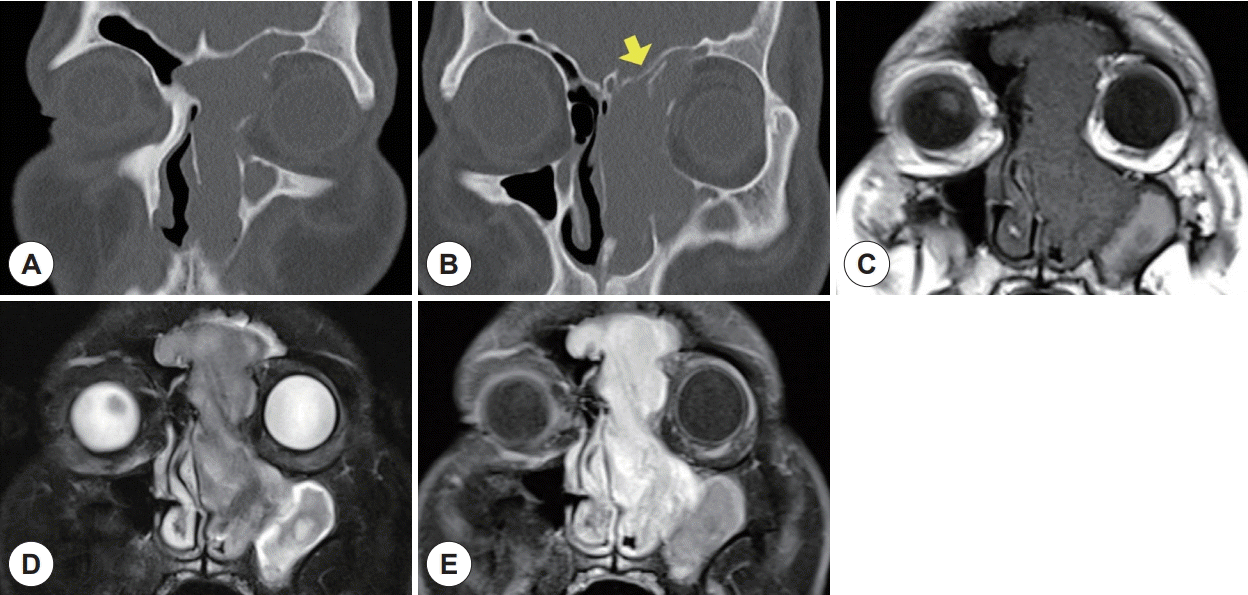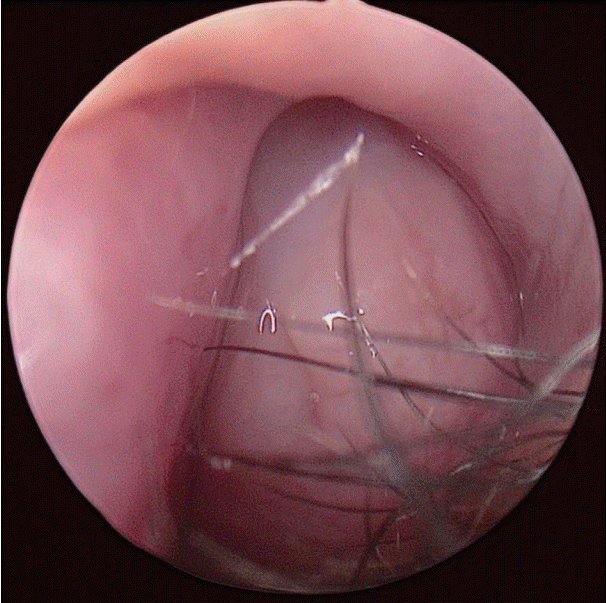1. Klemperer P, Rabin C. Primary neoplasms of the pleura. A report of five cases. Arch Pathol. 1931; 11:385–412.
2. Stout AP, Himadi GM. Solitary (localized) mesothelioma of the pleura. Ann Surg. 1951; 133(1):50–64.
3. Dunfee BL, Sakai O, Spiegel JH, Pistey R. Solitary fibrous tumor of the buccal space. AJNR Am J Neuroradiol. 2005; 26(8):2114–6.
4. Nielsen GP, O’Connell JX, Dickersin GR, Rosenberg AE. Solitary fibrous tumor of soft tissue: a report of 15 cases, including 5 malignant examples with light microscopic, immunohistochemical, and ultrastructural data. Mod Pathol. 1997; 10(10):1028–37.
5. Takasaki K, Watanabe T, Hayashi T, Kinoshita N, Kumagami H, Takahashi H. Solitary fibrous tumor arising from the sphenoid sinus. Case Rep Med. 2009; 2009:316042.
6. Mathew GA, Ashish G, Tyagi AK, Chandrashekharan R, Paul RR. Solitary fibrous tumor of nasal cavity: a case report. Iran J Otorhinolaryngol. 2015; 27(81):307–12.
7. Zeitler DM, Kanowitz SJ, Har-El G. Malignant solitary fibrous tumor of the nasal cavity. Skull Base. 2007; 17(4):239–46.
8. Zielińska-Kaźmierska B, Grodecka J, Szyszkowski A. Solitary fibrous tumor of the nasal cavity and paranasal sinuses: a case report. J Oral Biol Craniofac Res. 2015; 5(2):112–6.
9. Ahn TJ, Bae WY, Kim SJ, Kang MJ. Solitary fibrous tumor in nasal cavity: surgical treatment after angiographic embolization. Korean J Otorhinolaryngol-Head Neck Surg. 2009; 52(3):258–61.
10. Kim JH, Yim JW, Kim HK, Lee JG. A case of solitary fibrous tumor of the nasal cavity. J Rhinol. 2003; 10(1, 2):60–3.
11. Kodama S, Fujita K, Suzuki M. Solitary fibrous tumor in the maxillary sinus treated by endoscopic medial maxillectomy. Auris Nasus Larynx. 2009; 36(1):100–3.
12. Hasegawa T, Matsuno Y, Shimoda T, Hasegawa F, Sano T, Hirohashi S. Extrathoracic solitary fibrous tumors: their histological variability and potentially aggressive behavior. Hum Pathol. 1999; 30(12):1464–73.
13. Kohmura T, Nakashima T, Hasegawa Y, Matsuura H. Solitary fibrous tumor of the paranasal sinuses. Eur Arch Otorhinolaryngol. 1999; 256(5):233–6.
14. Thompson LDR, Lau SK. Sinonasal tract solitary fibrous tumor: a clinicopathologic study of six cases with a comprehensive review of the literature. Head Neck Pathol. 2018; 12(4):471–80.
15. Goodlad JR, Fletcher CD. Solitary fibrous tumour arising at unusual sites: analysis of a series. Histopathology. 1991; 19(6):515–22.





 PDF
PDF Citation
Citation Print
Print






 XML Download
XML Download